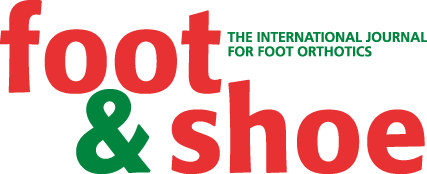Reality instead of lab conditions
Out of the lab into the real world - that was this year's motto of the winter symposium of the Human Motion Project. The network with scientists from different areas collects data with mobile accelerometry. Here for example the "actibelt"-sensor is a new tool to measure mobility in clinical research. At the clinical center in Munich the experts met in March to interchange their experience and to pave the way for a tighter cooperation of the project partners.
"It is not about telling each other how good we are," Dr. Martin Daumer, Munich, clarifies. Instead the symposium is supposed to help to close the gap between clinical application and labs. After a look into the history of the science of walking by Andreas Mayer, the lectures were about the perspectives for research and mainly the application in the patients' daily life: the mobile accelerometry as new possibility to measure mobility in clinical research, is Daumer's research focus and was basis of many studies presented at the symposium. The term means the objective measuring method to measure physical activity, accelerometers like "actibelt" record the intensity and duration of uni-axial or multi-axial accelerations. The data collected this way shall be brought together in the framework of the Human Motion Project, an international network of numerous renowned scientists from statistics, data management, computer sciences, mathematics, techno-mathematics, medicine and biology, and thus contribute to a new definition of the outcome for clinical studies.
Looking for the balance
Daumer emphasized in his keynote-lecture that it is not sufficient to have the methods functioning in a gait lab or in an artificial environment. If you want to weigh the precision of the tests in the lab against the usability of the results, the way tests under real conditions hold out, Daumer claims that it is important to find the balance.
The market for portable measuring systems is exploding, almost all body areas can meanwhile be equipped with sensors. He sees big differences between the available sensors. A golden standard has not been defined yet, the question as to where the body sensors should be positioned has not been solved yet. According to Daumer it is important that the devices enable the exact evaluation of parameters in the real world - number of steps, gait speed and -quality, distances and so on - and that they allow a division of activities - e.g. sitting, standing, walking, falling. He regards the development of such a system that the patients can carry home, as a "milestone within research of human motion."
Application in research and daily life
"First we would like to harvest the lower fruits, because we can now carry out high-quality long-term measurements with moving people in their real life", Daumer explains the issues of the current studies. There were many examples of concrete application areas in the subsequent lectures. Dr. Klaus Jahn and Dr. Roman Schniepp showed how the "actibelt" is used in patients of the Schön Klinik Bad Aibling and at the "Deutsches Zentrum für Schwindel- und Gleichgewichtsstörung" (German Center for Vertigo and Balance Disorders). There were also the first application reports for the research of multiple sclerosis and Parkinson disease.
Basic results
The scientists from the Human Motion Project specifically wanted to get meaningful results, relevant also from the patients' view, and so Dr. Jörg Goldhahn, Zurich, in his keynote and Dr. Reto W. Kressig, Basel and Dr. Eling de Bruin, Zurich, inquired what is known about measures, usually used when measuring mobility, like steps or gait speed, according to the newest scientific findings. On the one hand the tight connection between step length, tread frequency and walking speed was presented. On the other hand the walking speed can be a meaningful "vital sign", since it is easy to measure, clinically interpretable and potentially modifiable.
Falls were also focused, to which Jochen Klenk, Ulm, compiled the results. Especially because there are hardly any falls that did not occur under lab conditions and that are scientifically documented, the researchers see the chance to monitor patients at risk of falling over a longer period of time in their natural environment and thus to obtain significant data with "actibelt".
Transparency versus security?
Concluding, the speakers of the symposium talked about the important issue of the possibility to collect data in a network like the Human Motion Project without violating personality rights of the patients. Apart from technical challenges it is therefore also important to think about the usability of data, collected in different research groups, something that the network is working on intensely right now.
By Kathrin Ernsting




